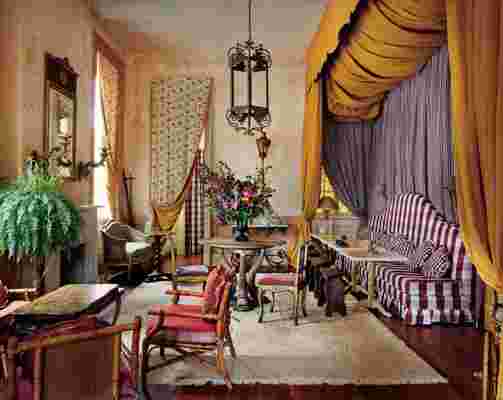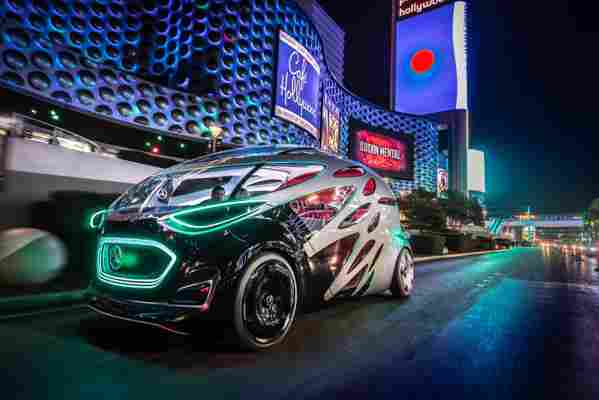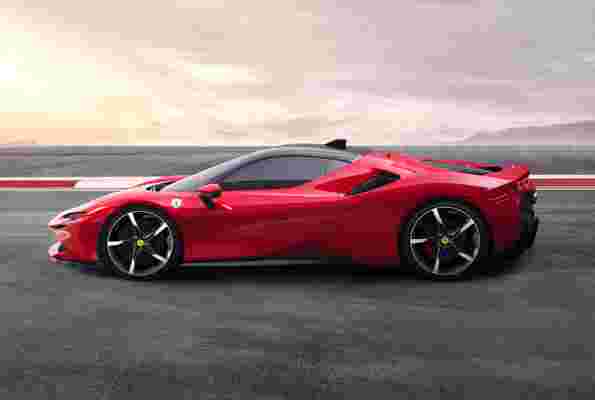Much of human progress over the past century has been magnificent. Technology that brings information to the remotest corners of the world and medicine that heals diseases once thought incurable are all signs of what humans can accomplish. Game-changing innovations are what we need more of right now, too. With just 10 years to reduce our global carbon dioxide output by 45 percent (or else), we need unprecedented and far-reaching solutions across industries, policy, and all sectors of society. Luckily, the design community is ahead of the curve.
“We need to find multidisciplinary solutions to the great challenges of our time in order to continue to live and thrive on this planet,” says Kjetil Trædal Thorsen, founder of Snøhetta, whose remarkable, energy-positive buildings are featured below. That's going to require keeping an open mind, “to change our understanding of what is ugly and what is beautiful," he reminds us, and “to redefine our aesthetic preferences.”
Although architects and designers cannot solve complex global problems alone, they're some of the most important players in this critical fight. Buildings that create more power than they use, urban corridors of biodiversity, and resilient designs that can withstand extreme weather and migrating populations are systematic changes that are beginning to emerge. This kind of critical thinking will create the forward momentum we need to regenerate our world, while making it more equitable and healthy—for humans, plants, and animals alike.

Call it the Airbnb effect: Tourists everywhere are saying so long to sterile, inauthentic design. Travelers of tomorrow want to feel culturally immersed in the places they visit. As a result, hotels and restaurants are focusing on authenticity and regional and hyperlocal context expressed through architecture and interiors to enhance visitor experiences. At the Hotel Peter & Paul in New Orleans, weaving the hotel into the local fabric was essential to its success. That meant “looking to the past to find the heart of the place and using history to create experiences that are rooted in soul yet swathed in the currency of today,” explains Ari Heckman, founding partner and chief executive officer of ASH NYC, and Will Cooper, partner and chief creative officer. “A well-designed space should feel less contrived and more experiential.”
The environment is not the only crisis, however; our health and well-being are at risk, too, due to the stressors all around us. For that reason, wellness is beginning to be considered in all aspects of design. The approach to cities and transportation is becoming more human-centered, offering walkability, bikeability, flexibility, and less pollution. In the workplace, things like air quality, thermal comfort, and inclusivity are helping to boost performance. And as our ability to capture and deploy big data improves, we'll use it to target interventions that will support our emotional and physical health.
Access to nature will also be vital, with vertical gardens, urban forests, and biodiverse backyards becoming the norm. It's not just about pretty spaces: Exposure to nature has been proven to help people heal faster, students learn better, and employees become more productive. And say goodbye to sterile, inauthentic design: The demand for immersive, contextual architecture and experiences will slow the rollout of dull hotels and shopping centers that could be dropped into Anywhere, USA. Technology will, of course, continue to seep into our lives, making our homes even more crucial sources of respite from the noise of the outside world. But as our appliances grow more connected, the presence of technology at home will recede into the background.
Great design will intrinsically be what drives this progress. “I am hopeful for the future of design and architecture,” says Thorsen, and we agree. Here's how its top thinkers are working to enhance our lives in the years ahead. The future is closer than you think.
Imagine a gleaming world where transportation is on-demand, clean, efficient, and safe. Where pedestrians rule the roads, freight vehicles are quiet, and long-distance trips are completed hassle-free. That's where the future of transportation is headed, and it's not as far off as you may think. Flying taxis and a hyperloop are both on the horizon—and run on electricity. Autonomous vehicles are preparing to help make our commutes more productive and package deliveries more reliable, while our homes will add smart platforms to receive them. When we do drive, it will be in forward-thinking cars, like Ferrari's SF90 Stradale, the brand's first production plug-in hybrid electric vehicle.
Smart planning will be the key to a smooth transition, though much of this new technology will function using existing infrastructure. Our buildings, too, will become decentralized transit hubs, and train stations, airports, and other hubs will be better connected than ever.


Whether it's jetting to far-flung adventure in wild lands or exploring urban side streets, travelers of tomorrow will have high expectations. They want seamless connectivity, efficient transportation, and immersive experiences, and the architecture and design of the near future aims to deliver. From airports that trim travel times to eco-retreats that plunge visitors into their natural surroundings, high rollers and budget spenders alike will find destinations and amenities that help them squeeze the most out of their wanderlust. Going forward, we'll enter worlds where we disconnect from digital drudgery and revitalize our spirits with hotels, open spaces, public art, and natural settings that are culturally stimulating and contextually relevant in the best possible ways.
Convenience and elegant technology will simplify and enrich our experiences, but above all, a sense of place is essential. “Geography tells us if we're in the mountains or in the desert,” says designer Mario Romano. “Architecture should too.”
As our understanding of urban planning increasingly focuses on humancentric design, cities will be laid out to enhance wellness. Walkability, bikeability, and more efficient and multimodal transportation will reduce pollution and increase health and happiness. Shared public spaces and mixed-use developments will be thoughtfully constructed with cultural and geographic sensitivity that brings diverse populations together, honors and develops a sense of place, and attracts visitors. Gone will be the homogenous, sterile malls and stand-alone shopping districts built for superconsumers. In come vibrant public spaces that allow people to connect and biodiversity to thrive. Access to nature will also be vital: Large-scale parks and forests, tiny wildflower meadows, vertical gardens, and urban agriculture will be the norm, and also help build more resilient communities in the face of extreme weather.
Buildings will also play a pivotal role in creating a brighter future. They'll be decentralized energy and transit hubs that improve the well-being of people and the ecology around them. Their facades will live, breathe, and clean the air, while improving the lives of their inhabitants. “The way we live now, supporting our lives with unclean energy to support a worldwide equilibrium of comfort levels, is in no way sustainable,” cautions Snøhetta founder Thorsen.
In our chaotic, busy lives, creating sanctuary is increasingly more important. But rather than seek it at a spa, we are retreating into our homes and creating backyard refuges. Inside these hallowed spaces and removed from the hustle of the outside world, we seek well-being, tranquility, and connection to nature. “People need quiet and space at the end of the day,” says color and paint expert Dee Schlotter of PPG, who sees calming and hopeful color trends on the horizon. Technology, of course, wants in, too, and our appliances will become more sophisticated and digitally adapted—even as they visually recede into the background.
More than ever, our abodes are turning into unique reflections of our inner selves, with decor tailored to our whims. Leasable home goods will allow us to redecorate at will, and enable a new generation of nimble, nomadic workers to easily move between cities and jobs. Likewise, furnishings that are easy to disassemble and move are growing popular, too. Physically free from the tyranny of stuff, we'll be more flexible—and financially freer—than ever before.
The ultimate resource for design industry professionals, brought to you by the editors of Architectural Digest
The end of the formal office as we know it may be fast approaching. Designers and smart employers are looking at the best ways to improve not only the operational performance of their buildings, but also employee health, happiness, and, as a result, productivity. Cutting-edge research shows that exposure to nature, access to daylight, and collaborative spaces that spark creativity will become increasingly imperative. As a sense of comfort begins to pervade the workplace, stiff, conventional furnishings are yielding to cushy couches, playful patterns, soft colors, and offbeat breakout areas. But these aren't just prettier places to work—such spaces affect productivity, absenteeism, and wellness, and have a significant impact on the bottom line.
